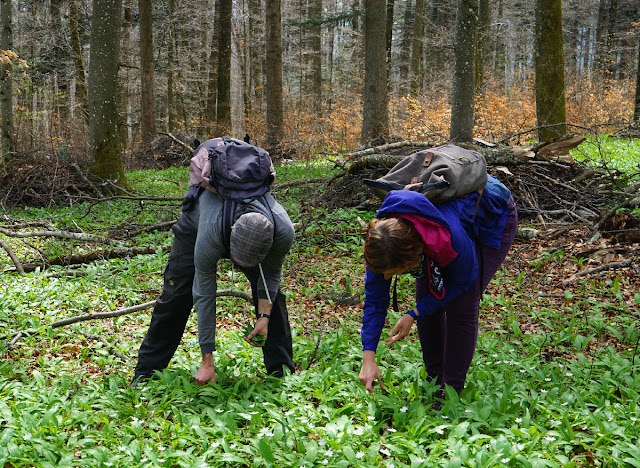What if, instead of reminding myself at every turn that we are doomed, I shift the tone towards something more positive? OK, some of you might wonder why this never occurred to me before, and of course it has (hence the cookie-baking), but changing our minds is a slow process, and maybe this is another step on my journey.
I was just listening to CBC's Unreserved, where Candace Kaleimamoowahinekapu Galla, of the Department of Language and Literacy Education at UBC, discussed the words we use to discuss aboriginal languages, and how those words affect the way the language thrives or declines. She mentions words like "dying", "extinction" and "declining", which put negative expectations in our minds, and words like "revival", "reclamation", and "revitalization", which are empowering to speakers of the languages and to the languages' own vitality. This made me think about my last blog post, which I dramatically titled "Living Well in the Apocalypse". I did have second thoughts about that title, thinking maybe that "Post-Consumerist Age" would have been better than "Apocalypse", but I told myself it wasn't as catchy. I think I'm too concerned with catching my readers' attention. Sure, "Apocalypse" will get me lots of Google results, but will it help me achieve my goal? My goal is to see a positive future, despite current global threats.
A threat creates fear, and fear can definitely lead us to take action, but is it the action that we want? Or more specifically, is it the action that will best serve us in the long term? Studies show us that conservatives are fearful, that we can make liberals more conservative by heightening their fear, and that we can make conservatives more liberal by helping them to feel safe. This blows my mind. I suddenly see this in play everywhere. I heard of a girl in our city who was sexually assaulted after getting off her bus, and I immediately went to my daughter's room to warn her and declare tighter restrictions on her freedom. How does this keep her safe? I know in my rational mind that what we need to do is educate, love, and support our children so that they will become neither the victims nor the perpetrators of this sort of crime, but in the face of sudden fear, I acted on the impulses of my amygdala. By the way, the right amygdalas of conservatives are bigger and more active.
If fear is what is keeping us from stopping climate change, from developing a fair and egalitarian society, and generally from saving our species from extinction, shouldn't we let it go? Obviously it's not that easy, but I intend to try my best, and I'm beginning by looking at my successes. Unschooling is one of them. I admit that I leaned towards unschooling my children because my own school experience was so terrible that I wanted to protect them from it. However, within a couple of years, I saw such amazing positive results that I continued unschooling (and blogging and teaching from an unschooling perspective) because I loved it. And it's been wildly successful. My kids, husband and I spend close to zero time bemoaning the school system, and a lot of time looking joyfully at our many opportunities and engaging in them. The result of this is that we have two engaged, confident learners, and have also managed to bring some of this fabulous learning theory into a few schools. And above all, we feel great about it!
If education and child-rearing can be such a joyful innovative adventure, so can the rest of the societal changes we need. Maybe we'll figure out how to properly convert to solar energy. Maybe cutting back on plastics, instead of meaning sacrifice, can mean growing, developing and purchasing amazing new foods and products! Maybe living without big corporations can mean a blossoming of new, locally-developed community resources! This can be beautiful.
So my personal challenge now is to do this for the seemingly insurmountable problems facing our species' future. Wait. Not problems -- opportunities! Language matters. Let's try that again.
 I hereby challenge myself to find positive, exciting opportunities for growth! Evolution. I would like for human evolution to be progressive rather than reactionary. I don't want to be cutting out the things I love; to sacrifice joy and abundance out of fear. We have more than enough resources to live very well without decimating our planet and each other. I would like for those I love to feel safe in this societal progress, and for all of us to evolve, finding wonderful new ways to thrive, together. I want to run out into the sunshine of our new and fabulous future.
I hereby challenge myself to find positive, exciting opportunities for growth! Evolution. I would like for human evolution to be progressive rather than reactionary. I don't want to be cutting out the things I love; to sacrifice joy and abundance out of fear. We have more than enough resources to live very well without decimating our planet and each other. I would like for those I love to feel safe in this societal progress, and for all of us to evolve, finding wonderful new ways to thrive, together. I want to run out into the sunshine of our new and fabulous future.








































